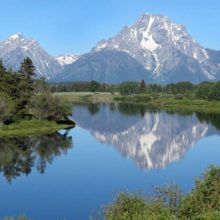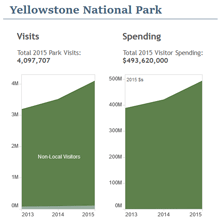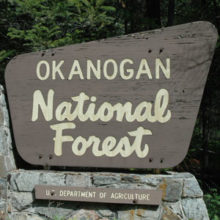- National Parks overall have much greater visitation, overnight visits, spending per visitor, and economic impacts than National Monuments.
- In the eight National Monuments redesignated as National Parks examined in this report, visits increased by 21 percent, on average, in the five years after redesignation compared to the five previous years.
- In the Intermountain West, from 2000 to 2016, recreation visits to National Parks increased while visits to National Monuments decreased. Importantly, National Parks saw a much faster increase in overnight visits, which have great economic impact in the surrounding region.
- Depending on how local communities advertise a new National Park, redesignation of White Sands National Monument may result in between $6.2 million and $7.5 million in new spending, 84-107 new jobs, and between $2.7 million and $3.3 million in labor income.
Economic Impacts of National Monuments Redesignated National Parks
This report investigates the potential economic effects of National Monuments redesignated National Parks and, more specifically, evaluates the potential economic effects of converting the White Sands National Monument to a National Park (more below).
In the eight National Monuments redesignated as National Parks examined in this report, visits increased by 21 percent, on average, in the five years after redesignation compared to the five previous years.
Since 2000, the number of recreation and overnight visits to all National Parks in the Intermountain West have grown much more than in National Monuments in the region.
Total recreation visits in National Parks grew by 49 percent between 2000 and 2016 while recreation visits to National Monuments decreased by 3 percent.
During the same time period, overnight visits to National Parks grew by 17 percent while overnight visits to National Monuments decreased by 11 percent.
There is potential for economic benefits from redesignating a National Monument as a National Park. Currently, most National Monuments are not overnight destinations, substantially lessening their economic impact. Increases in visitor spending may be attained by attracting people for longer visits, more overnight visits, more guided tours, and more concession-related spending in a Park or adjacent community.
New tourist-supporting infrastructure such as lodging, restaurants, and tours could help adjacent communities better capitalize on these places as economic assets.
It is possible that there is something to the National Park brand and identity that National Monuments do not share, at least not to the same extent. National Parks, for example, can be sources of pride for communities, who become actively involved in promoting more visitation.
The timing may be advantageous to designate a new National Park in New Mexico. Visitation to National Parks has risen rapidly, in part due to the National Park Service centennial celebrations in 2016, and as a result of numerous national promotional efforts. Communities surrounding White Sands may benefit from an increase in visitation, in particular overnight visitation, that is common with National Parks.
Impact of White Sands National Monument Redesignated as a National Park
A proposal is being considered to redesignate the White Sands National Monument in New Mexico as a National Park. The Monument is managed by the National Park Service (NPS), and the proposed redesignation would maintain these lands as units of the National Park system.
Depending on how local communities advertise a new National Park and develop businesses that can capture tourist spending, a redesignation of White Sands may result in between $6.2 million and $7.5 million in new spending, 84-107 new jobs, and between $2.7 million and $3.3 million in labor income.
In the table below we assume visitation would increase by 21 percent. To estimate the range of likely impacts from redesignation, we calculate the 95 percent confidence interval for spending per visitor, jobs per visitor, and labor income using data from the peer units. This provides us with lower and upper bounds, and there is a 95 percent chance the outcome falls within this range, assuming these units follow a path similar to their peers.
| Measure | White Sands National Monument | |
|---|---|---|
| Low estimate | High estimate | |
| Expected total number of visitors after redesignation | 601,413 | 601,413 |
| Expected new visitors after re-designation | 102,435 | 102,435 |
| Expected new spending | $6,163,000 | $7,458,000 |
| Expected new jobs | 84 | 107 |
| Expected new labor income | $2,686,000 | $3,272,000 |
White Sands National Monument is located in Dona Ana and Otero counties, New Mexico. The closest communities are Alamogordo (population 31,283) and Las Cruces (101,759). It is also adjacent to the Holloman Air Force Base and White Sands Missile Range. The Monument is known for its glistening white dunes, made up of the world’s largest gypsum dunefield, that rise over 60 feet and cover 275 square miles. It is 143,733 acres in size.








